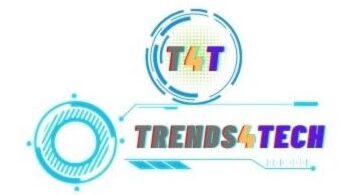Different Types Of Budgeting And Forecasting
Budgeting and forecasting are both important financial planning tools that businesses use to set financial goals and make informed decisions. A budget is a financial plan that outlines expected revenue and expenses for a specific period of time, typically a fiscal year.
A forecast, on the other hand, is a prediction of future business performance based on historical data and current trends. Budgeting and forecasting are critical and mainly used in short-term and long-term decision making.
What is Budgeting?
Budgeting for a business is the process of creating a financial plan that outlines the expected revenues and expenses for the upcoming fiscal period. It is a crucial aspect of financial management that allows a business to allocate resources effectively and efficiently to achieve its strategic goals. The budgeting process typically involves analyzing past financial data and trends, estimating future sales and expenses, and setting financial targets for various departments or areas of the business.
The budgeting process usually starts with setting revenue targets based on expected sales, and then allocating resources to various areas of the business based on priority and need. This may include capital expenditures, investments in technology, marketing, advertising, employee salaries, benefits and other expenses necessary to support the business operations. The budget should be reviewed and adjusted periodically to reflect changes in the business environment or unexpected events.
Effective budgeting allows a business to plan for growth, manage cash flow, and make informed decisions about resource allocation. It also helps to identify potential areas of risk and opportunities for improvement. By tracking actual results against the budget, a business can identify areas where performance needs improvement and adjust its operations accordingly.
Different types of Budgeting
There are several types of budgeting that businesses can use, depending on their needs and goals. Some of the most common types of budgeting include:
Traditional Or Static Budgeting: This is the most common type of budgeting, where the budget is based on expected revenues and expenses for a fixed period of time, such as a fiscal year. The budget remains fixed throughout the year, regardless of changes in the business environment.
Rolling Or Continuous Budgeting: This type of budgeting is more flexible than traditional budgeting, as it is updated regularly to reflect changes in the business environment. Rolling budgets typically cover a fixed time period, such as a year, but are updated on a regular basis, such as quarterly or monthly.
Zero-Based Budgeting: This type of budgeting starts from scratch each budget cycle, with every expense and activity evaluated and justified based on its expected contribution to the business objectives. This approach ensures that every expenditure is carefully considered and that no resources are wasted.
Activity-Based Budgeting: This type of budgeting focuses on the activities required to produce goods or services, rather than on the products themselves. This approach involves identifying the costs associated with each activity and then allocating resources based on those costs.
Capital Budgeting: This type of budgeting focuses on investments in capital assets, such as property, plant, and equipment. The budget is used to determine the financial feasibility of potential investments and to allocate resources accordingly.
Flexible Budgeting: This type of budgeting is based on a range of potential outcomes, rather than a fixed budget. The budget is adjusted as actual results come in, allowing the business to adapt to changing circumstances.
What is Forecasting?
Forecasting for a business is the process of predicting future business performance based on historical data, current trends and other relevant factors. It is an important aspect of financial planning that helps businesses to anticipate future events, identify potential risks, opportunities and make informed decisions.
Forecasting typically involves analyzing data such as sales trends, customer behavior, economic indicators and industry trends to make predictions about future performance. The forecasting process may use statistical models, market research and other tools to analyze data and make predictions.
The purpose of forecasting is to help a business to anticipate changes in the business environment and adjust its operations accordingly. For example, a business may use forecasting to anticipate changes in demand for its products or services, and adjust production and marketing strategies accordingly. Forecasting can also help a business to anticipate changes in its costs and adjust its pricing and cost structure to maintain profitability.
Effective forecasting requires accurate and timely data, as well as the ability to analyze and interpret that data to make informed predictions. By using forecasting as part of their financial planning process, businesses can make more informed decisions, reduce risk and improve overall financial performance.
Different types of Forecasting
There are several types of forecasting that businesses can use to predict future performance, depending on the nature of the data being analyzed and the purpose of the forecast. Some common types of forecasting include:
Qualitative Forecasting: This type of forecasting is based on expert opinions, rather than on statistical analysis. Qualitative forecasts are often used when historical data is not available or is unreliable. Common methods of qualitative forecasting include market research, surveys, and Delphi method.
Time-Series Forecasting: This type of forecasting is based on historical data, and is used to predict future trends based on patterns in past performance. Common time-series forecasting methods include moving averages, exponential smoothing, and ARIMA (Autoregressive Integrated Moving Average).
Regression Analysis: This type of forecasting is used to predict the relationship between two or more variables, such as sales and advertising spend. Regression analysis can be used to identify correlations and to estimate the impact of changes in one variable on another.
Econometric Forecasting: This type of forecasting combines economic theory with statistical analysis to predict future performance. Econometric models can be used to predict variables such as inflation, GDP, and interest rates.
Judgmental Forecasting: This type of forecasting is based on the opinions and experience of individuals within the business. Judgmental forecasting can be used to make predictions about future sales, customer behavior, or other variables based on expert knowledge and intuition.
Simulation Forecasting: This type of forecasting uses computer models to simulate the impact of different scenarios on future performance. Simulation models can be used to predict the impact of changes in pricing, marketing, or other factors on sales and profitability.
Conclusion
Both budgeting and forecasting are critical and are used in both short-term and long-term decision making. For example, if budgets are not created, the firm may become meaningless. At the same time, if forecasting is not done, there is a risk of overlooking and the accumulation of bad judgments and inactivity.

